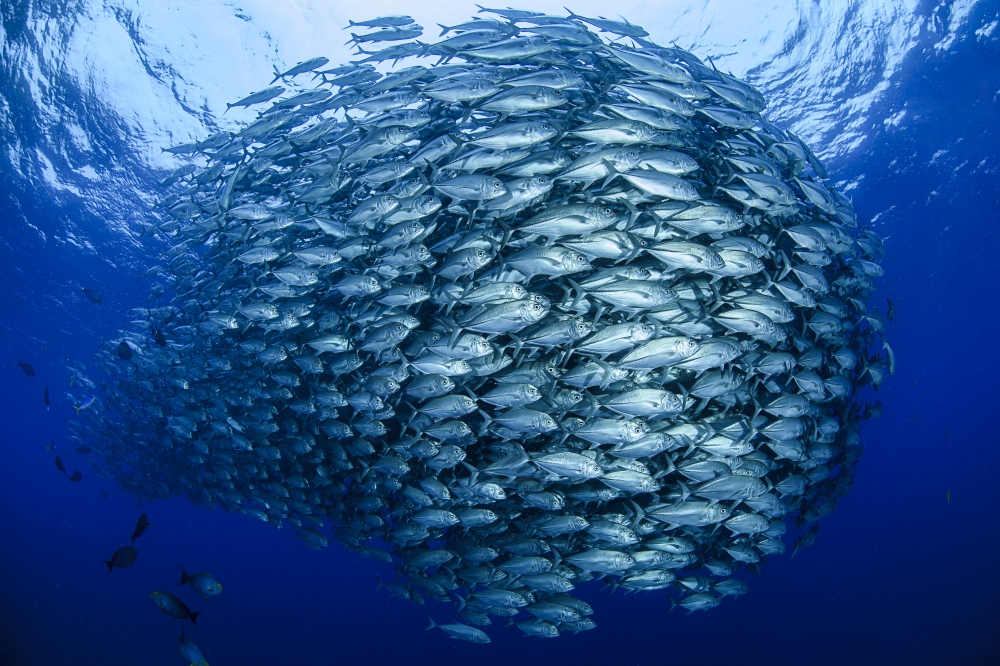

Nearly half of the fish caught worldwide come from stocks that are scientifically monitored and, on average, are increasing in abundance. Effective management appears to be the main reason these stocks are at sustainable levels or successfully rebuilding.
That is the main finding of an international effort, led by scientists including UC Santa Barbara’s Christopher Costello, to compile and analyze data from fisheries around the world. The results appear in the Proceedings of the National Academy of Sciences.
“There’s a common belief out there that overfishing is irreversible. Our research shows that when fishery managers are resolute and put sound management in place they can rebuild fish stocks and the livelihoods and ecosystems that depend on them,” said Costello, a professor of environmental and resource economics at UC Santa Barbara’s Bren School of Environmental Science & Management and coauthor of the paper.
The project builds on a decade-long international collaboration to assemble estimates of the status of fish stocks — or distinct populations of fish — around the world. This information helps scientists and managers know where overfishing is occurring, or where some areas could support even more fishing. Now the team’s database includes information on nearly half of the world’s fish catch, up from the approximately 20% represented in the last compilation in 2009.
“The key is, we want to know how well we are doing, where we need to improve and what the problems are,” said lead author Ray Hilborn, a professor at University of Washington’s School of Aquatic and Fishery Sciences. “Given that most countries are trying to provide long-term sustainable yield of their fisheries, we want to know where we are overfishing, and where there is potential for more yield in places we’re not fully exploiting.”
Over the past decade, the research team built a network of collaborators in countries and regions throughout the world, inputting their data on valuable fish populations in places such as the Mediterranean, Peru, Chile, Russia, Japan and northwest Africa. About 880 fish stocks are now included in the database, giving a much more comprehensive picture of the health and status of fish populations worldwide.
Still, scientific estimates of the health and status are not available for most of the fish stocks in South and Southeast Asia. Fisheries in India, Indonesia and China alone represent 30% to 40% of the world’s fish catch that is essentially unassessed.
“There are still big gaps in the data and these gaps are more difficult to fill,” said co-author Ana Parma, a principal scientist at Argentina’s National Scientific and Technical Research Council and a member of The Nature Conservancy global board. “This is because the available information on smaller fisheries is more scattered, has not been standardized and is harder to collate, or because fisheries in many regions are not regularly monitored.”
The researchers paired information about fish stocks with recently published data on fisheries management activities in about 30 countries. This analysis found that more intense management led to healthy or improving fish stocks, while little to no management led to overfishing and poor stock status.
These results show that fisheries management works when applied, and the solution for sustaining fisheries around the world is implementing effective fisheries management, the authors explained.
“With the data we were able to assemble, we could test whether fisheries management allows stocks to recover. We found that, emphatically, the answer is yes,” said Costello, who also is a board member with the Environmental Defense Fund. “This really gives credibility to the fishery managers and governments around the world that are willing to take strong actions.”
Fisheries management should be tailored to fit the characteristics of the different fisheries and the needs of specific countries and regions for it to be successful. Approaches that have been effective in many large-scale industrial fisheries in developed countries cannot be expected to work for small-scale fisheries, especially in regions with limited economic and technical resources and weak governance systems, Parma explained.
The main goal should be to reduce the total fishing pressure when it is too high, and find ways to incentivize fishing fleets to value healthy fish stocks.
“There isn’t really a one-size-fits-all management approach,” Costello said. “We need to design the way we manage fisheries so that fishermen around the world have a long-term stake in the health of the ocean.”
The research was funded by the Science for Nature and People Partnership, a collaboration between the National Center for Ecological Analysis and Synthesis at UC Santa Barbara, The Nature Conservancy (TNC) and Wildlife Conservation Society (WCS). Individual authors received funding from TNC, WCS, the Walton Family Foundation, Environmental Defense Fund, the Richard C. and Lois M. Worthington Endowed Professorship in Fisheries Management, and donations from 12 fishing companies.



